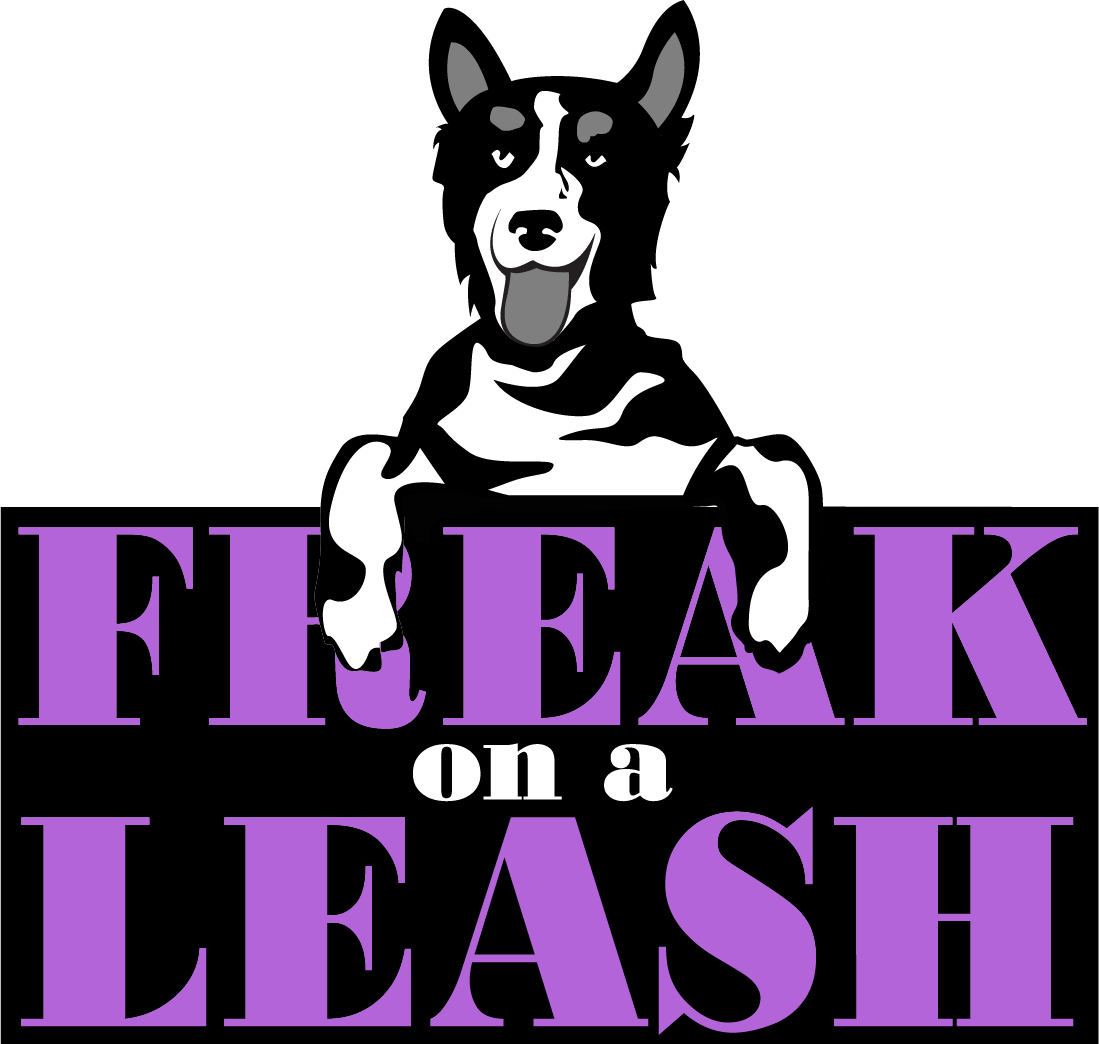Estimated read time: 12 minutes
Introduction
“My dog is just stubborn.” If you’ve said this before, you’re not alone. It’s one of the most common things we hear from new clients here at Freak on a Leash. But the truth is, dogs aren’t born defiant. What looks like stubbornness is usually something else entirely—and once we understand what’s really going on, we can change the behavior with kindness, not control.
This post will explore what’s actually behind stubborn behavior, why punishment doesn’t work long term, and how to help your dog want to listen—even when things get tough.
1. The Myth of the “Stubborn Dog”
Calling a dog stubborn implies that they understand what we want and are choosing not to do it just to be difficult. But that’s a very human lens. Dogs do what’s reinforcing or emotionally safe—not what we think they “should” do.
“He knows what sit means—he just won’t do it!”
Let’s reframe that: if your dog won’t sit, it could be because:
- There’s something more interesting competing for their attention
- They’re confused about what you’re asking
- They don’t feel safe (pain, stress, fear)
- They haven’t been taught to sit in that specific context
None of these are about willful disobedience. They’re about motivation, communication, and comfort.
2. The Motivation Equation
Dogs aren’t robots—they’re living beings who weigh their options. When a dog “ignores” you, it often means the alternative (sniffing, greeting another dog, chasing a squirrel) is simply more rewarding in that moment. Here is a nice blogpost on motivation
The Three Questions Your Dog Is Asking
- Is this safe?
- Is this worth it?
- Do I understand what you want?
If the answer to any of these is “no,” your dog might freeze, bolt, or do their own thing—and you might label them stubborn.
3. The Power of Reinforcement History
If a behavior has been practiced and reinforced consistently, your dog will do it even in more difficult environments. If it’s been punished, confused, or rarely rewarded, they’ll abandon it quickly.
Example:
You taught “down” in the living room with treats. Then you go to the park and ask for “down” with no treats, around barking dogs. Your dog doesn’t do it.
Is that stubbornness—or lack of reinforcement history in that context?
4. Learned Helplessness: When “Calm” Isn’t Confidence
Sometimes, a dog who seems quiet or compliant is actually shut down. This is called learned helplessness—a state where the dog has learned that nothing they do changes the outcome, so they stop trying.
This often happens when dogs are repeatedly corrected or forced into behaviors. It might look like calm behavior, but it’s rooted in fear, not understanding.
5. Common Situations Misread as “Stubborn”
🚫 Refusing to Come When Called
Possible causes:
- Your dog is too aroused or distracted
- Recall wasn’t taught in high-distraction environments
- Coming to you means the fun ends (e.g., you leash them up and go home)
🚫 Not Responding to Known Cues
Possible causes:
- They don’t understand the cue in that new environment
- They’re stressed, tired, or over threshold
- You’re competing with something more reinforcing
🚫 Pulling on Leash Despite Training
Possible causes:
- Environment is overstimulating
- Leash walking hasn’t been rewarded consistently
- You’re using too much pressure, which creates opposition reflex
6. Punishment and Why It Backfires
Using punishment to correct “stubborn” behavior may suppress the action temporarily, but it doesn’t teach what to do instead. Worse, it can create side effects:
- Fear of the handler
- Loss of trust
- Shut down or freezing behavior
- Escalation to defensive aggression
If your dog’s not doing what you ask, you don’t need more control—you need a better communication system.
7. So What Should You Do Instead?
Step 1: Meet Their Needs
- Is your dog getting enough sleep (12–16 hours)?
- Are they getting mental enrichment, not just physical exercise?
- Are you giving them decompression time?
Step 2: Make Cues Worth It
- Use high-value rewards, especially early in training
- Celebrate effort, not just perfection
- Let them choose: training should feel like a game, not a command
Step 3: Practice in Layers
- Start in easy environments and work up
- Break down behaviors into achievable steps
- Use a long line or management tools to support success
Step 4: Make Training Predictable
Dogs thrive on routine. Use the same marker words, consistent timing, and clear criteria. Your consistency builds their confidence—and confidence builds responsiveness.
8. Real-Life Case Study: Milo, the “Stubborn” Boxer
Milo’s family came to us frustrated. He wouldn’t come when called, pulled on leash, and jumped up constantly. He’d “check out” during training.
Turns out Milo was overstimulated, under-rested, and confused about cues. We focused on:
- Reducing household chaos
- Adding structure to walks and meals
- Building engagement through food games and long lines
Within a month, Milo was focused, responsive, and walking calmly—without a single correction. He wasn’t stubborn. He was overwhelmed.
9. The Big Takeaway
“Stubborn” is a label. And labels can block progress. When we shift from “why won’t my dog do this?” to “what’s making it hard for them to succeed?”, we unlock better behavior—and a better relationship.
Every dog wants to feel safe and understood. When we train with empathy, clarity, and motivation, they listen—not because they’re forced to, but because they want to.
Call to Action
If your dog seems “stubborn” or “hard to train,” don’t give up. Our Foundations & Manners In-Home Training Packages are designed to uncover what’s really going on—and help you build a relationship based on cooperation, not conflict.
- 6-Session Package: Ideal for focusing on key behaviors like recall, leash manners, and engagement games.
- 10-Session Package: Great for long-term change and personalized support for tougher training roadblocks.
Start your dog’s transformation today with science-backed, fear-free training in Chesapeake and Virginia Beach.
Your dog isn’t stubborn. They’re trying to tell you something. Let’s listen—together.
